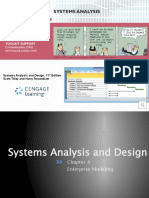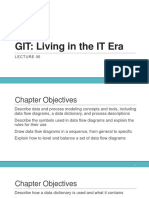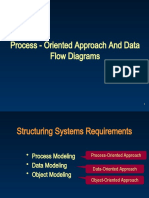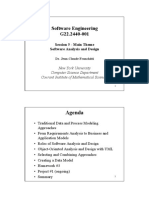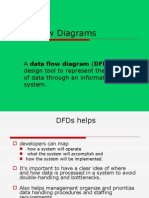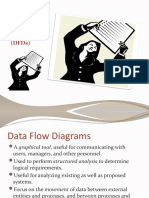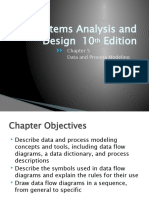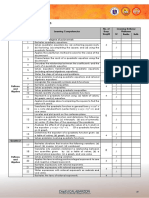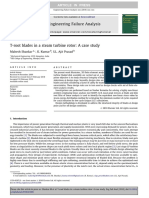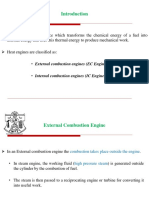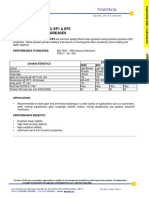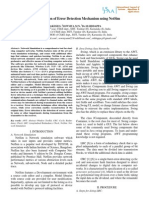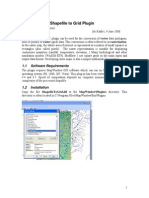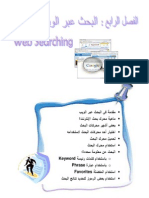0% found this document useful (0 votes)
26 views19 pagesChapter 5 Data and Process Modeling
Chapter 5 covers data and process modeling within system development, focusing on the relationship between logical and physical models, the role of Data Flow Diagrams (DFDs), and the creation of data dictionaries. It outlines the construction and guidelines for DFDs, including symbols, errors to avoid, and the importance of balancing and leveling diagrams. Additionally, it introduces tools for process description such as structured English, decision tables, and decision trees.
Uploaded by
Aifani MmbubanaCopyright
© © All Rights Reserved
We take content rights seriously. If you suspect this is your content, claim it here.
Available Formats
Download as PPTX, PDF, TXT or read online on Scribd
0% found this document useful (0 votes)
26 views19 pagesChapter 5 Data and Process Modeling
Chapter 5 covers data and process modeling within system development, focusing on the relationship between logical and physical models, the role of Data Flow Diagrams (DFDs), and the creation of data dictionaries. It outlines the construction and guidelines for DFDs, including symbols, errors to avoid, and the importance of balancing and leveling diagrams. Additionally, it introduces tools for process description such as structured English, decision tables, and decision trees.
Uploaded by
Aifani MmbubanaCopyright
© © All Rights Reserved
We take content rights seriously. If you suspect this is your content, claim it here.
Available Formats
Download as PPTX, PDF, TXT or read online on Scribd
/ 19






